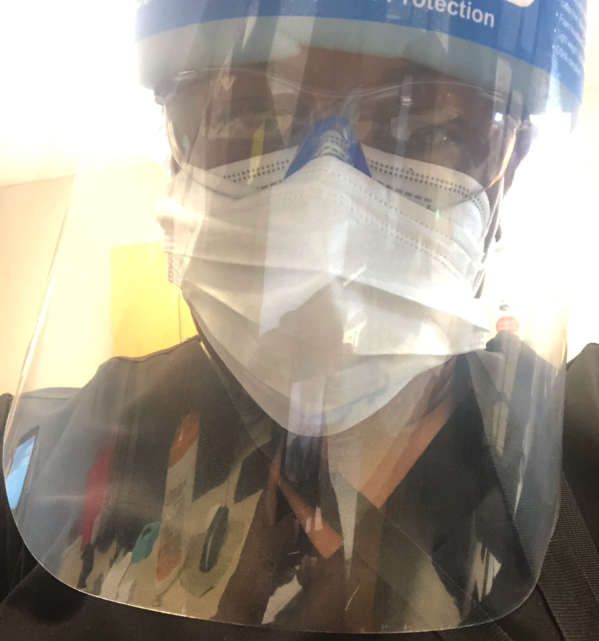Several Skin of Color Society members have volunteered to help in the battle against the novel coronavirus, through institutions around the US and the world. In the first of our series, we share the frontline experiences of SOCS Board member Candrice Heath, MD, FAAD, who is an Assistant Professor of Dermatology, Lewis Katz School of Medicine at Temple University in Philadelphia.
Q. How did you get involved in frontline efforts?
A: The dermatology department was volunteered to help with frontline COVID efforts in the hospital (Temple University), so I stepped up to fulfill the call to action. Many hospital departments were working non-stop and needed help with the growing number of COVID patients. I provided some relief for the inpatient teams.
Q. What did you do?
A. I served as the attending physician on an inpatient hospitalist service performing duties like seeing patients with COVID, attending multidisciplinary rounds and updating families about care plans. The highly specialized pulmonary critical care specialists determined care plans for each and every COVID (or COVID suspected) patient hospital-wide daily. I was proud of the attention to detail that every patient benefited from. No one could fathom just how many experts were reviewing, giving input and determining the care of their loved ones. If something ever happened to me, I would want this many brains contributing to my care daily. Thank goodness for the senior Internal Medicine Resident “buddy” assigned to me daily who was safely tucked away in an empty, no-COVID contact location with whom I reviewed each patient several times daily to manage commodities and tell me how to use the computer system. It was a well-oiled machine.
Q. What was your experience like?
A. It was fascinating and very scary at the same time—a true mix of emotions. The part I liked the best was seeing the behind-the-scenes of how a multidisciplinary team functions during a pandemic. The scary part was knowing how much close contact I had with COVID patients each day. It made me think about my own mortality more than I ever have before. It allowed me to truly relate to frontline workers who walk toward the risk of getting COVID each day they come to the hospital.
Q. What was the big takeaway from this experience?
A. I can do all things with prayer and the right mindset despite the circumstance.
Q. Any suggestions for fellow derms?
A. Find ways to use the skills you are comfortable using to assist. Offering to help with calling patients with COVID screening results, PPE drives, for hospital-based derms — mastering telemedicine to keep the revenue flowing so the hospital system can continue to function, consider giving some lectures for residents-in-training programs who now have limited work hours (primary care programs as well).
Other dermatology departments across the country are helping in other ways including calling outpatients back regarding their COVID test results, answering patient messages for those who are being pulled to work on the frontlines and doing teledermatology. Since many outpatient practices are closed, dermatology residents are not seeing the numbers of patients they did in the past. Blow the dust off of some of your best cases and volunteer to give lectures for a dermatology program. Every role is vital and helps during the pandemic. I was working directly with COVID patients, but these other non-frontline pandemic roles are just as critically important to keep people away from the emergency room if they do not need to be there and continue to enhance resident education. My inpatient service was brief and I am extremely grateful for those who continue to work with no end in sight.
Thank you @drcandriceheath for sharing your insights and experiences, and for your frontline efforts!
We invite all SOCS members who have served in the fight against COVID-19 to share your stories. Please get in touch with us at: socialmedia@skinofcolorsociety.org





